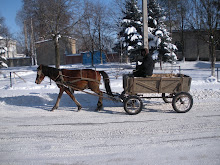 Visiting the Capitol is a new adventure for those who have, and have not, been there before. The new visitor center, which is below the Rotunda, just opened about a month ago. Just as if I were riding in the singles line at Stevens Pass, I sneaked into a tour without a long wait or needing a reserved ticket. The tour starts with a 13 minute film about democracy, the process of building the Capitol (and rebuilding after the fire of 1814), and the city itself.
Visiting the Capitol is a new adventure for those who have, and have not, been there before. The new visitor center, which is below the Rotunda, just opened about a month ago. Just as if I were riding in the singles line at Stevens Pass, I sneaked into a tour without a long wait or needing a reserved ticket. The tour starts with a 13 minute film about democracy, the process of building the Capitol (and rebuilding after the fire of 1814), and the city itself.Next comes the famous Rotunda. There are so many details that I could not explain them all here--and of course--I could have stayed there for hours admiring each and every one. The painting on te ceiling shows Washington with 13 ladies all serving a different task, symbolic of the early union. The circular walls of the Rotunda have three levels of art work that in some way tell the story of our nation's history.
The picture above is a statue of Dwight D. Eisenhower, a gift from the state of Kansas. Each state is allowed to have two statues in the capitol at a time, plus there are a variety of busts and sculptures from organizations and historical societies. These statues are found in the crypt, Rotunda, visitor center, and of course, Statutory Hall.
Two things to mention here: The crypt was intended to hold the graves of George and Martha Washington, but per their request, they have stayed in Mount Vernon. Washington set so many precedents, we have taken many for granted. Secondly, Statutory Hall is the old House chamber. Quite small, the House members quickly out grew the room. Though on the floor you can still find plaques on the locations where members who later became president sat during their House terms. This is the famous room where you can whisper on one end, and be heard loud and clear on the other. Can you imagine trying to have a private, and better yet political, conversation in that room? The acoustics, to my understanding are a by-product of the many renovations the room has endured.
 This picture to the left is something that took me back to a classroom on the second floor of South Kitsap High School. Specifically, junior year, when all I did with life was study for my AP U.S. History class. This is a picture of the old Supreme Court. Today, Federal laws supercede state laws because of the McChulloch v. Maryland opinion that Chief Justice John Marshall delivered in 1819. Also, Taney presided over this court room when the Dred Scott decision stated that slavery could not be outlawed. Perhaps the change in location helped to turn the tides of the courts afterall.
This picture to the left is something that took me back to a classroom on the second floor of South Kitsap High School. Specifically, junior year, when all I did with life was study for my AP U.S. History class. This is a picture of the old Supreme Court. Today, Federal laws supercede state laws because of the McChulloch v. Maryland opinion that Chief Justice John Marshall delivered in 1819. Also, Taney presided over this court room when the Dred Scott decision stated that slavery could not be outlawed. Perhaps the change in location helped to turn the tides of the courts afterall.E Pluribus Unum.




























No comments:
Post a Comment